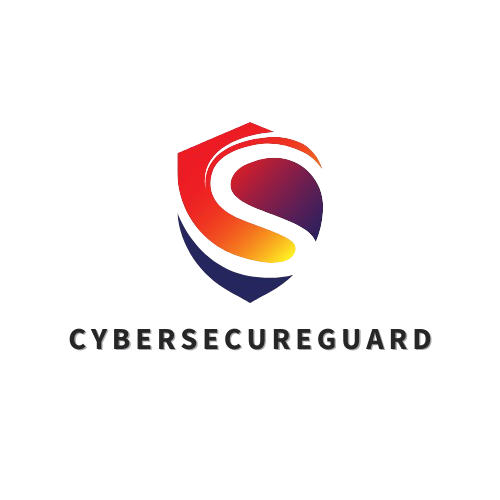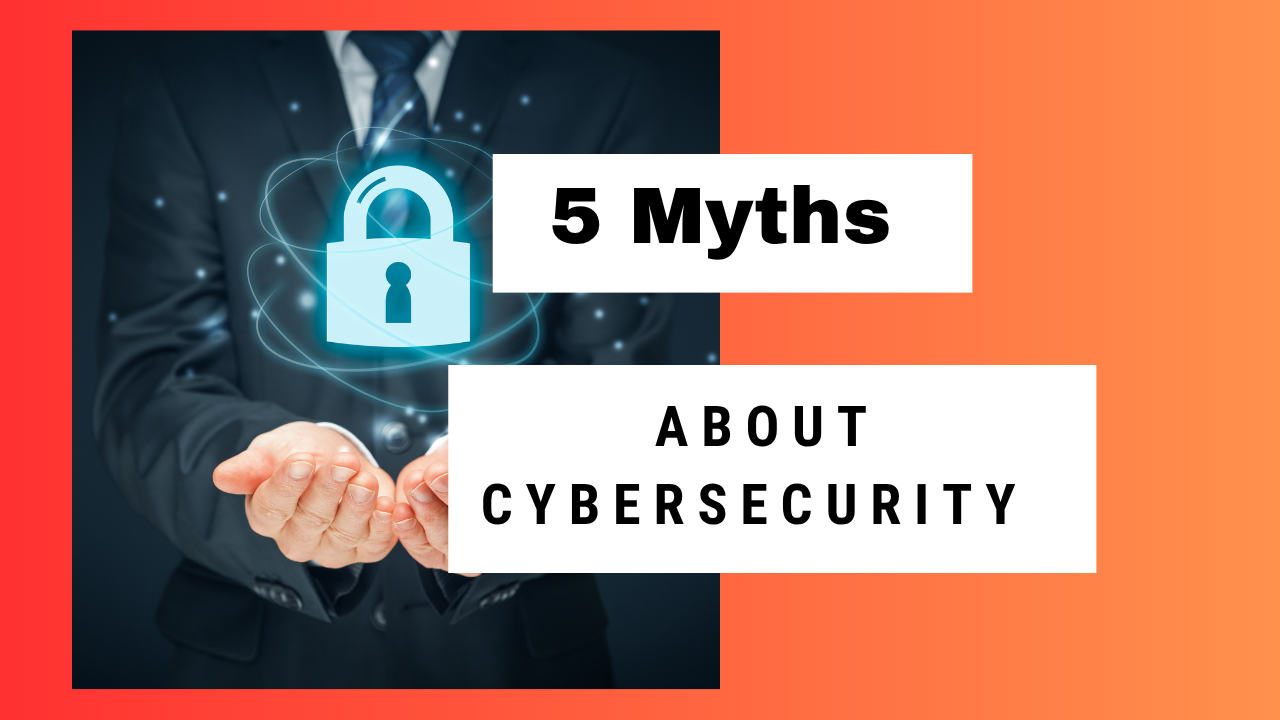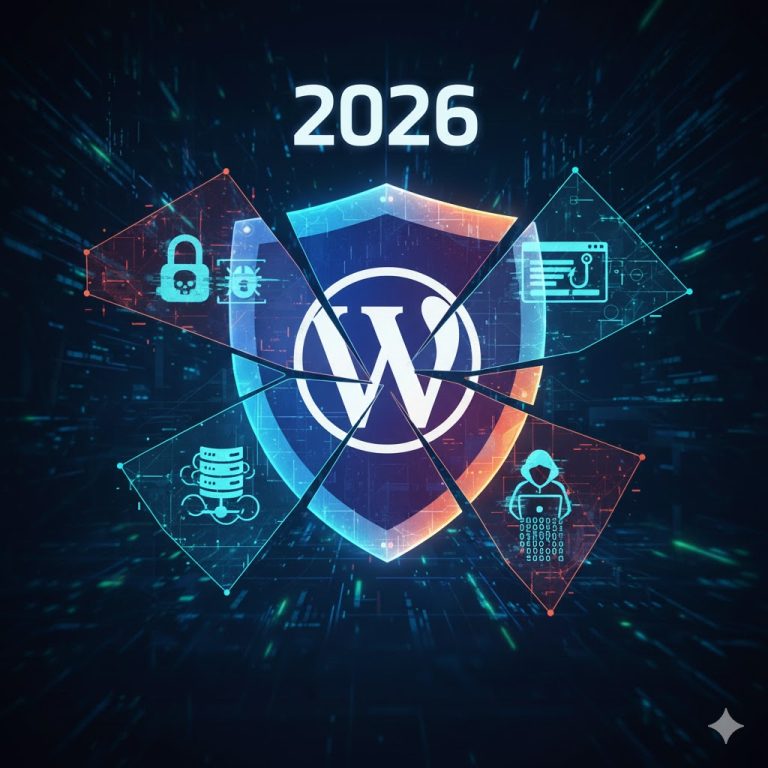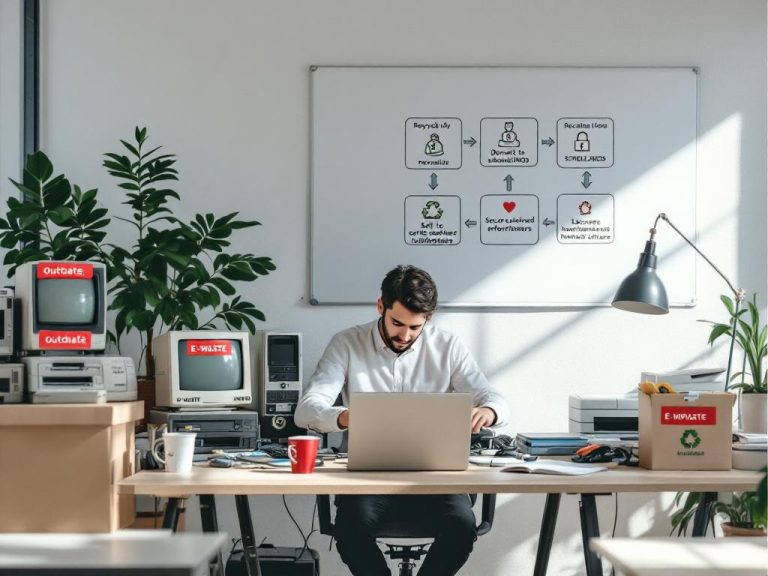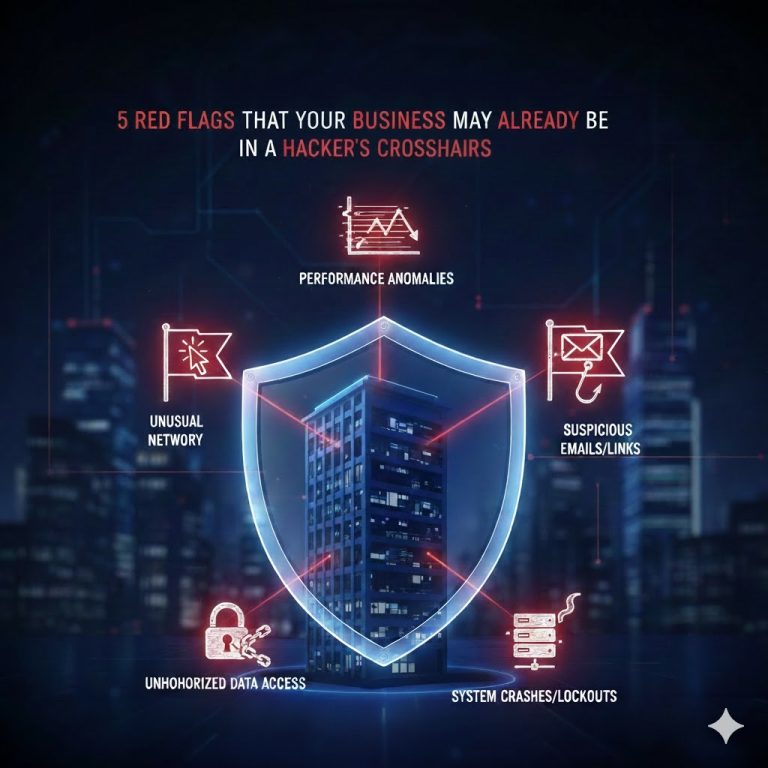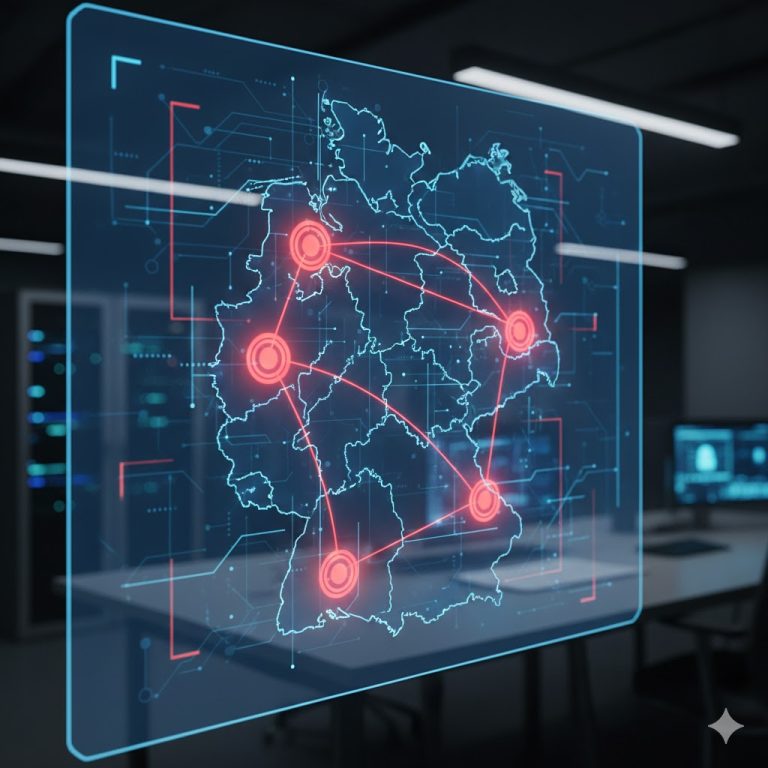Think you’re safe from hackers? Think again. Today cyberattacks have become an everyday reality. Hackers are getting smarter, and their tactics are more sophisticated than ever before. The sad truth? People — and even businesses — fall victim to cybercrimes daily, many of which could have easily been prevented. The root cause of these attacks often lies in the belief in outdated cybersecurity myths.
Many of us assume that our existing security measures are enough, that hackers only target large corporations, or that the cloud automatically keeps our data safe. But in reality, these myths leave you wide open to attack. The online threats of 2025 are more complex than ever, and what worked in the past simply isn’t enough anymore.
In this eye-opening video, I’ll expose the 5 most dangerous cybersecurity myths that are putting your data, privacy, and digital life at risk. More importantly, I’ll walk you through what actually works in 2025 to protect yourself from hackers and online threats. Whether you’re an individual or a small business owner, this is the practical, jargon-free advice you need to stay safe in the digital world.
Myth #1: “Hackers only target big companies”
Reality check: Cybercriminals don’t just go after global corporations or government networks — they go after anyone with valuable data. And in today’s interconnected world, that means everyone.
Most people still believe that hackers have no reason to attack them because they’re “too small” or “not important enough.” But from a hacker’s perspective, you don’t need to be famous or wealthy to be worth the effort. Your personal information — such as email logins, stored passwords, saved credit cards, and even your online shopping history — can easily be sold on the dark web or used for identity theft.
Small businesses and freelancers are particularly vulnerable. They often have weaker security systems, limited budgets, and no dedicated IT department. That makes them prime targets for phishing, ransomware, and credential theft. Many attackers use automated tools that scan the internet 24/7, looking for easy entry points — unsecured websites, outdated WordPress plugins, weak Wi-Fi passwords, or unpatched operating systems.
It’s not personal — it’s profitable.
Hackers don’t need to know who you are. They just need one vulnerability, one click on a fake email, or one unprotected device to gain access.
In short: If you’re online, you’re a target.
The best mindset is to assume that your data is valuable — and to protect it accordingly.
Myth #2: “I have antivirus — I’m safe”
Many people still believe that installing antivirus software makes them fully protected against cyber threats. While antivirus is an important first step, it’s far from a complete security solution in 2025.
Antivirus tools are designed to detect and block known malware — viruses, trojans, and some types of ransomware. But today’s cybercriminals don’t always rely on traditional malware. Instead, they use social engineering, zero-day exploits, and AI-generated phishing attacks that easily bypass outdated security definitions.
In other words, antivirus software can’t stop what it doesn’t recognize.
Hackers are constantly evolving their techniques to stay ahead, and many attacks now target your behavior, not just your system. A convincing fake login page, a malicious browser extension, or a deceptive email from a “trusted” sender can all compromise your security long before your antivirus reacts.
Even worse, many users install antivirus software and then develop a false sense of security. They stop updating their systems, click on suspicious links, or use weak passwords because they assume their software will “handle it.” This mindset is exactly what cybercriminals count on.
True cybersecurity in 2025 goes far beyond antivirus. It includes:
-
Regular software and system updates
-
Multi-factor authentication (MFA) for all important accounts
-
Secure browsers and privacy tools that block trackers and scripts
-
Awareness training to recognize phishing and manipulation tactics
-
And, of course, reliable backups in case something slips through
So yes, keep your antivirus — but remember, it’s just one piece of the puzzle.
The real protection comes from layered security and a proactive mindset.
Myth #3: “The cloud is automatically secure”
The cloud has transformed how we work, store, and share data — but it has also created a dangerous illusion of safety. Many individuals and even businesses assume that if their files are stored “in the cloud,” they’re automatically protected from hackers, data loss, or breaches. Unfortunately, that’s one of the biggest cybersecurity myths of all.
While cloud providers like Google, Microsoft, and Dropbox invest heavily in infrastructure security, they only protect their own systems — not yours. This is called the shared responsibility model. The provider secures the servers, networks, and data centers, but you are responsible for securing your own accounts, passwords, access permissions, and backups.
Think of it like renting a safety deposit box in a bank: the bank protects the vault, but you’re responsible for locking your box and not giving out your key.
Most breaches involving cloud data happen because of human error, not because the cloud itself was hacked. Examples include:
-
Weak or reused passwords
-
Lack of two-factor authentication
-
Misconfigured access permissions (e.g., public file links)
-
Employees uploading sensitive data to personal drives
-
No backup strategy for critical files
And remember: cloud sync is not the same as a backup.
If ransomware encrypts your local files, that encryption often syncs instantly to your cloud account — effectively destroying your “backup.” The only true protection is having separate, offline backups that can’t be tampered with.
To stay secure in 2025, treat the cloud as a tool, not a guarantee.
-
Use strong, unique passwords for every account.
-
Enable multi-factor authentication (MFA) by default.
-
Regularly review who has access to shared folders or drives.
-
And always maintain independent backups — ideally both local and encrypted.
Cloud technology is powerful, but it’s not magic. The safety of your data still depends on how you use it.
Myth #4: “I’m too smart to fall for phishing”
Many people believe they could easily recognize a scam email or fake website — after all, how hard can it be to spot bad grammar or suspicious links? But modern phishing attacks are no longer the obvious “Nigerian prince” emails of the early 2000s. In 2025, phishing has evolved into a highly sophisticated form of psychological manipulation known as social engineering — and even experienced professionals fall for it.
Attackers now use AI-generated messages that perfectly mimic the tone, formatting, and style of legitimate emails. Some even use voice cloning or deepfake videos to impersonate coworkers, CEOs, or service providers. These scams are designed to bypass logic and trigger emotion — fear, urgency, or curiosity — so that victims act before they think.
It’s no longer about intelligence; it’s about human psychology.
Phishing preys on trust. A well-crafted message from “your bank,” “your IT department,” or “a delivery company” can look completely real, especially if it includes personal details scraped from social media or leaked databases.
Here are some of the most common social engineering tactics in 2025:
-
Phishing (email): convincing messages urging you to click a malicious link or update account details.
-
Smishing (SMS): texts pretending to be from delivery services, mobile providers, or banks.
-
Vishing (voice phishing): phone calls using AI-generated voices to demand “urgent” action.
-
Deepfake scams: video or voice messages that appear to come from a trusted person or executive.
Even IT experts get fooled — not because they lack knowledge, but because the attacks are designed to exploit human behavior, not technology.
The solution?
-
Slow down and verify before you click or respond.
-
Contact the sender through a known, official channel.
-
Never share credentials or codes over email, SMS, or phone.
-
Use security awareness training to stay sharp — especially in professional environments.
Confidence is good. Caution is better.
In cybersecurity, the people who think they can’t be tricked are often the easiest to trick.
Myth #5: “Cybersecurity is too technical for me”
This is perhaps the most dangerous myth of all — the belief that cybersecurity is only for IT professionals, hackers, or people who “understand computers.”
In reality, cybersecurity today is everyone’s responsibility, and it’s far more about awareness and daily habits than about deep technical knowledge.
The truth is, most cyberattacks don’t happen because someone hacked into an advanced firewall — they happen because of simple human mistakes: using weak passwords, clicking unverified links, ignoring software updates, or trusting fake emails. None of these require a degree in computer science to prevent. They just require basic knowledge, awareness, and consistency.
In 2025, digital protection isn’t about being a tech expert — it’s about being digitally smart.
That means:
-
Keeping your devices and software up to date
-
Using strong, unique passwords (or a password manager)
-
Enabling two-factor authentication (2FA) everywhere possible
-
Being mindful of what you share online
-
Learning to question messages that demand urgency or emotion
Small steps like these make a huge difference. Cybersecurity doesn’t have to feel overwhelming — you just need to understand the core principles and apply them consistently.
And remember: every secure click, every update, every cautious decision counts.
When you make security a part of your everyday routine, you become harder to hack — no matter your technical background.
At CyberSecureGuard, our mission is to make cybersecurity accessible, practical, and human. You don’t need to speak “tech.” You just need to stay informed, stay alert, and take ownership of your digital safety.
Watch the Full Breakdown on YouTube
👉 5 Cybersecurity Myths You Still Believe (and How to Stay Safe in 2025)
Learn how these myths are putting millions of people at risk — and what truly works to protect yourself, your business, and your digital life in 2025.
Conclusion: 5 Cybersecurity Myths You Still Believe in 2025
Cybersecurity in 2025 is no longer about firewalls and antivirus software — it’s about awareness, adaptability, and personal responsibility. The most dangerous threat today isn’t just the hacker on the other side of the world — it’s the false sense of security that comes from believing outdated myths.
Hackers exploit what people overlook: weak passwords, cloud misconfigurations, and overconfidence in their own digital habits. The good news? You can take control. By replacing old assumptions with clear, practical actions, you immediately become harder to hack and more resilient against modern cyber threats.
Every small step counts — from enabling two-factor authentication to questioning suspicious messages or keeping regular offline backups. Cybersecurity isn’t about fear; it’s about empowerment.
You don’t need to be a tech expert to stay safe. You just need the right mindset — and the willingness to stay informed. Because in today’s digital world, security starts with you.
Follow me on Facebook or Tumblr to stay up to date
Connect with me on LinkedIn
Take a look at my services
And for even more valuable tips, sign up for my newsletter
